Advertisement
New Portrait Series Depicts Vibrant Life At Sites Where Police Killed Black Americans
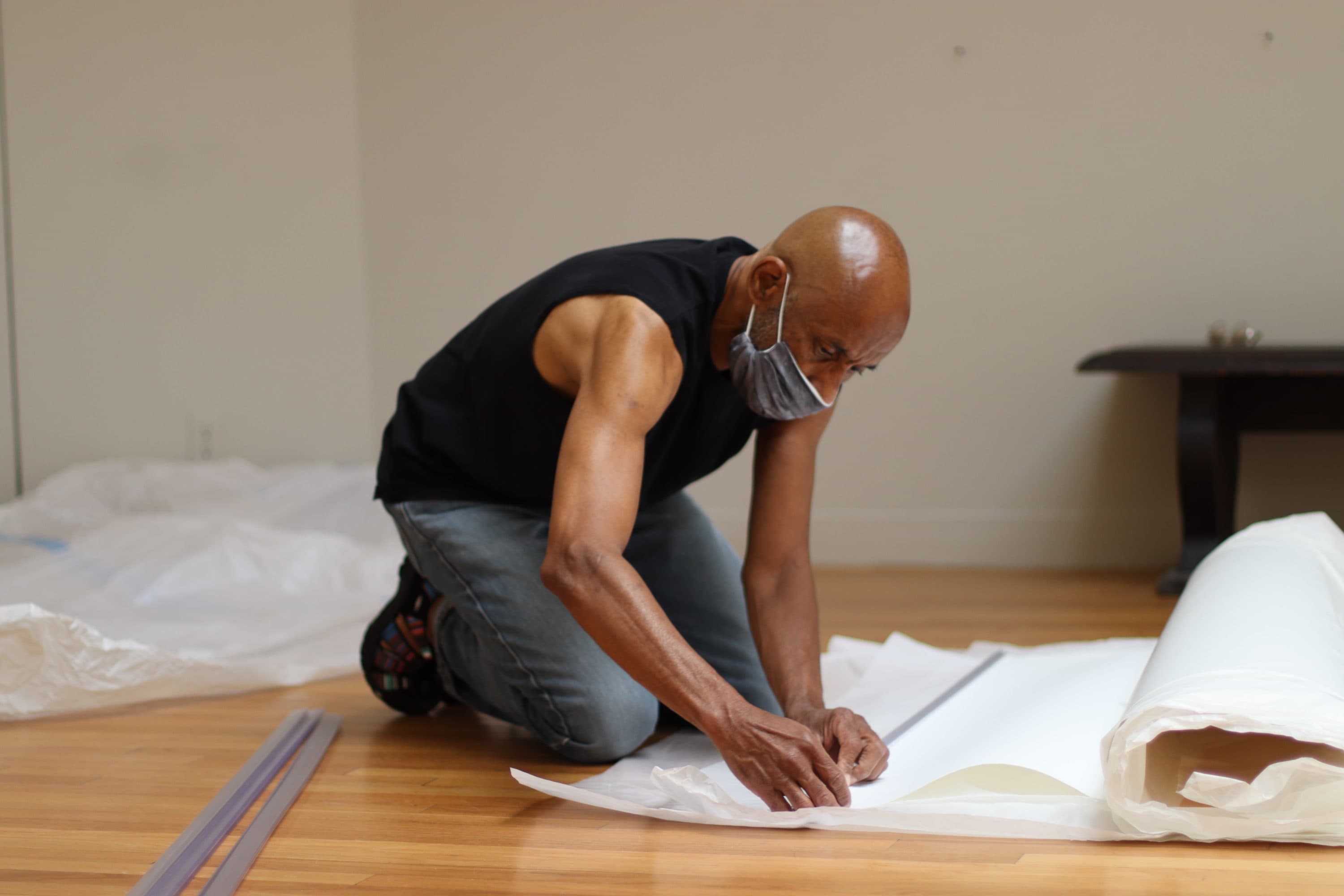
Artist Keith Morris Washington has a new larger-than-life portrait series he's calling "Black Lives . . ."
That’s what you see: a woman sitting on a chair, two teenage boys walking with backpacks, a man grinning ear to ear with his arms crossed.
But these black-and-white portraits are much more than they appear — they are people Washington met at the sites of police killings around the country.
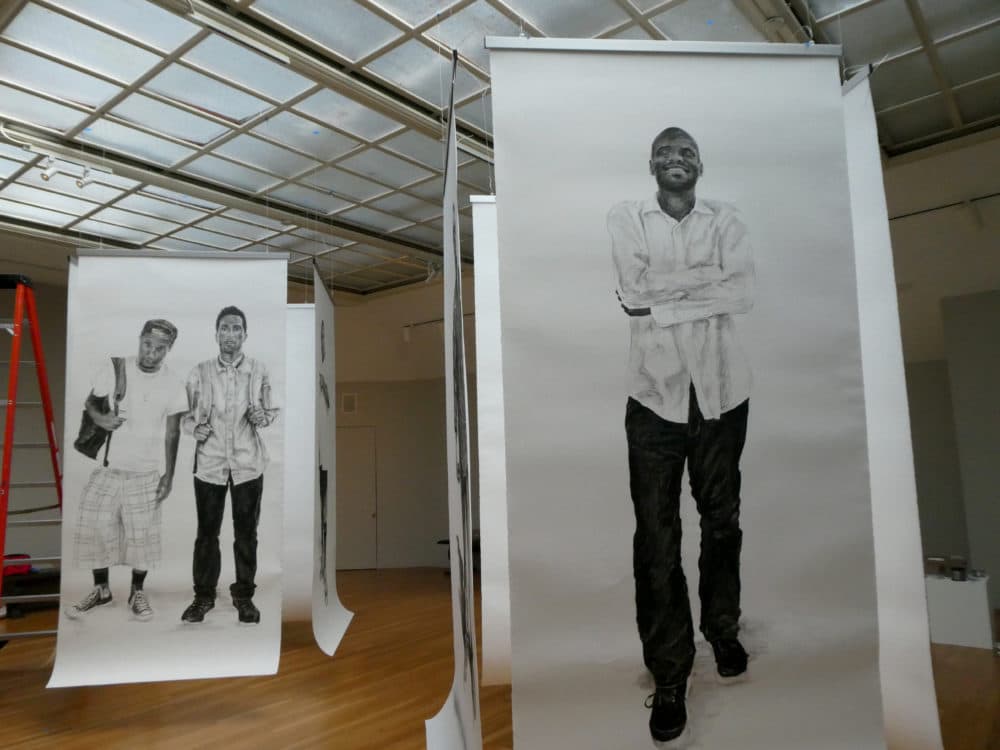
In graduate school, Washington decided to pay homage to Black lynching victims with a series of landscape paintings titled: “Within Our Gates.” The works portray the lynching sites as they are today, not depicting the violence of the crimes that were committed there.
He was inspired by the Hudson River School movement from the 1800s that created spectacular American landscape art during a time when the country, then embroiled in a civil war, was anything but peaceful.
For his new series “Black Lives . . .,” Washington was inspired by the Black Lives Matter and #SayHerName movements. In 2016, his students at the Massachusetts College of Art and Design took over a town hall meeting to put forth racial justice demands, he says.
Motivated by their actions and other demonstrations across the country, Washington landed on the idea to create life-sized portraits of ordinary Black Americans in places such as Oakland, California, and Ferguson, Missouri, where Black folks have been killed by police.
“The previous series ‘Within Our Gates’ is about memorializing the victims of white violence,” he says. “In this case, I did not want to continue to place Black folks in the role of victim, but rather I wanted to honor these people who manage to live and survive despite living in these horrendous circumstances.”
Advertisement
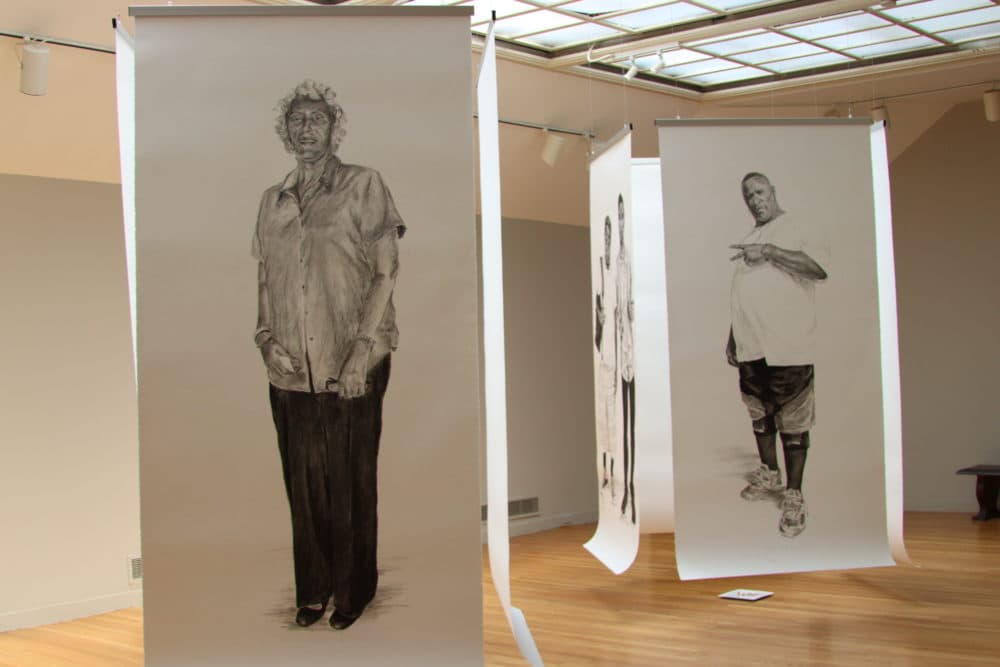
He commenced his road trip in Oakland traveling through Los Angeles and Las Vegas. He then headed toward Texas, a stop he made for Sandra Bland, a Black woman who was pulled over and arrested for a minor traffic issue in 2015. Three days later, Bland was found dead in her jail cell.
“As I got off the highway and was headed towards Prairie View A&M [University], where Sandra was also headed, I realized just how close she was to the university when she got pulled over and arrested by that police officer,” he says. “She was literally within a quarter-mile of being safe.”
That trip ended up being “a very challenging, emotional” journey for Washington, he says.
While on Prairie View A&M’s campus, Washington snapped photographs of students and staff who he later painted. He kept being reminded of how close Bland was to campus on that hot July day in 2015.
Washington's drawings not only show Black people as they go about their lives, but also represent survival near where life was once taken.
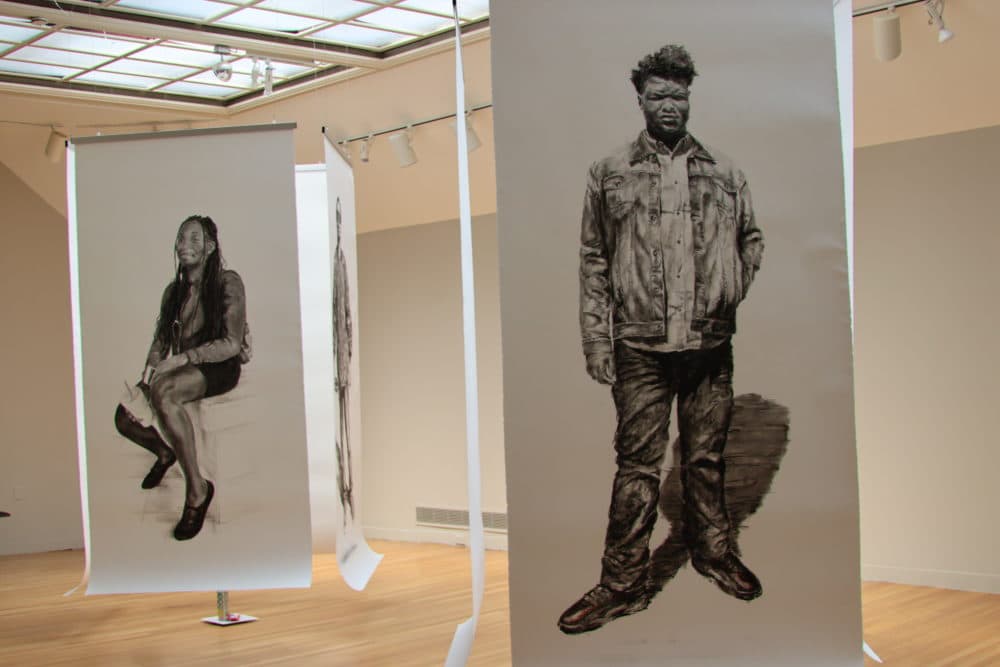
“I just really want to extol and honor these folks, my folks, our folks who live in these places,” he says. “We often only see them as these abstract images on the television screen because some tragedy has happened.”
Washington’s works, on display at the Concord Center for the Visual Arts in Massachusetts, can be seen in-person by appointment only due to COVID-19.
At the exhibit, groupings of four paintings suspend from the ceiling to form a square. Items are placed inside the square in memory of some of the lives that were taken by police — cigarettes for Eric Garner, who was put in a lethal chokehold by police in 2014 for selling loose cigarettes, and Skittles and Arizona iced tea for Trayvon Martin, who had these snacks on him when he was fatally shot.
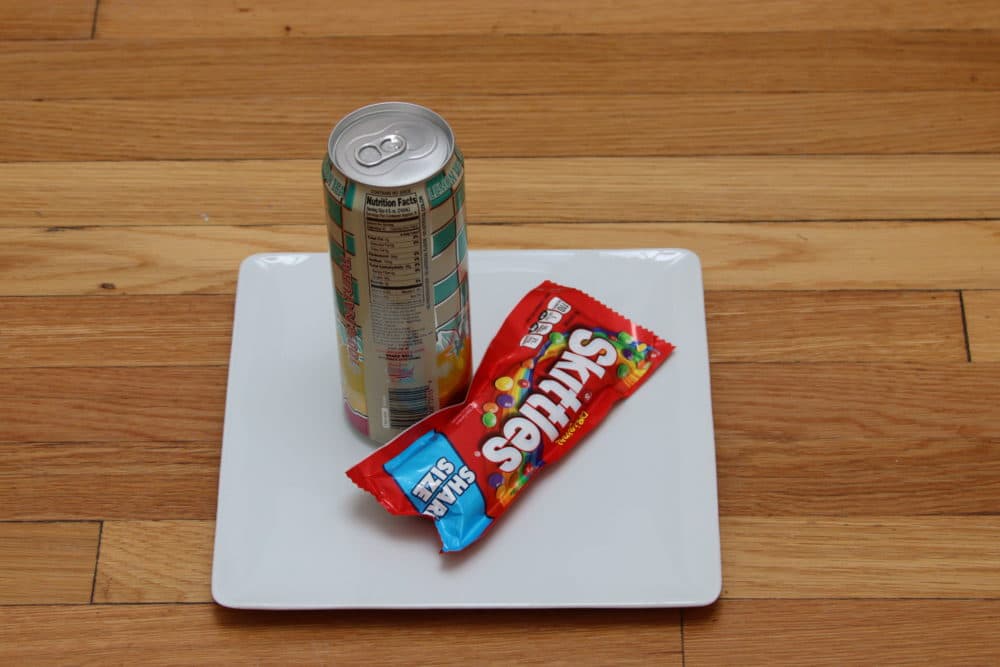
“It feels to me almost like these drawings are there to protect the spirit of, in this case, Trayvon Martin and Eric Garner,” he says.
The title for his series, “Black Lives . . .,” purposefully has omission periods because for Washington, “it’s not clear to me yet that Black lives matter in this country.”
While he finds joy in the process of making art, he says the sorrow of current and historical anti-Black racism and police brutality can’t be painted over.
“Hopefully, as people come in and view these shrines, they will be closer to the realization that, yes, absolutely, these lives matter as much as the viewer’s life matters,” he says. “But the pain of living in a white supremacist culture — that doesn't go away.”
Karyn Miller-Medzon produced and edited this interview for broadcast with Tinku Ray. Serena McMahon adapted it for the web.
This segment aired on August 13, 2020.

